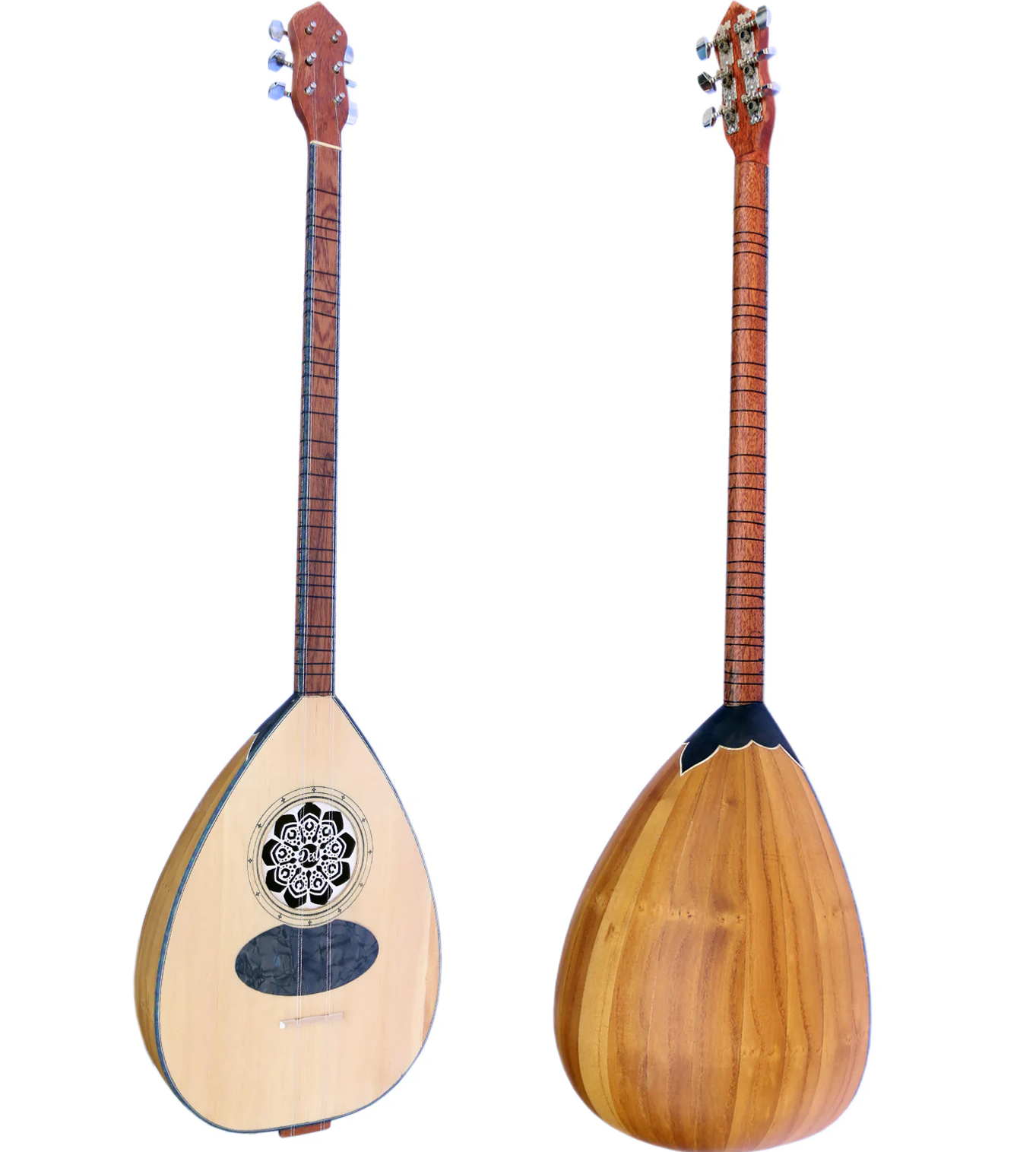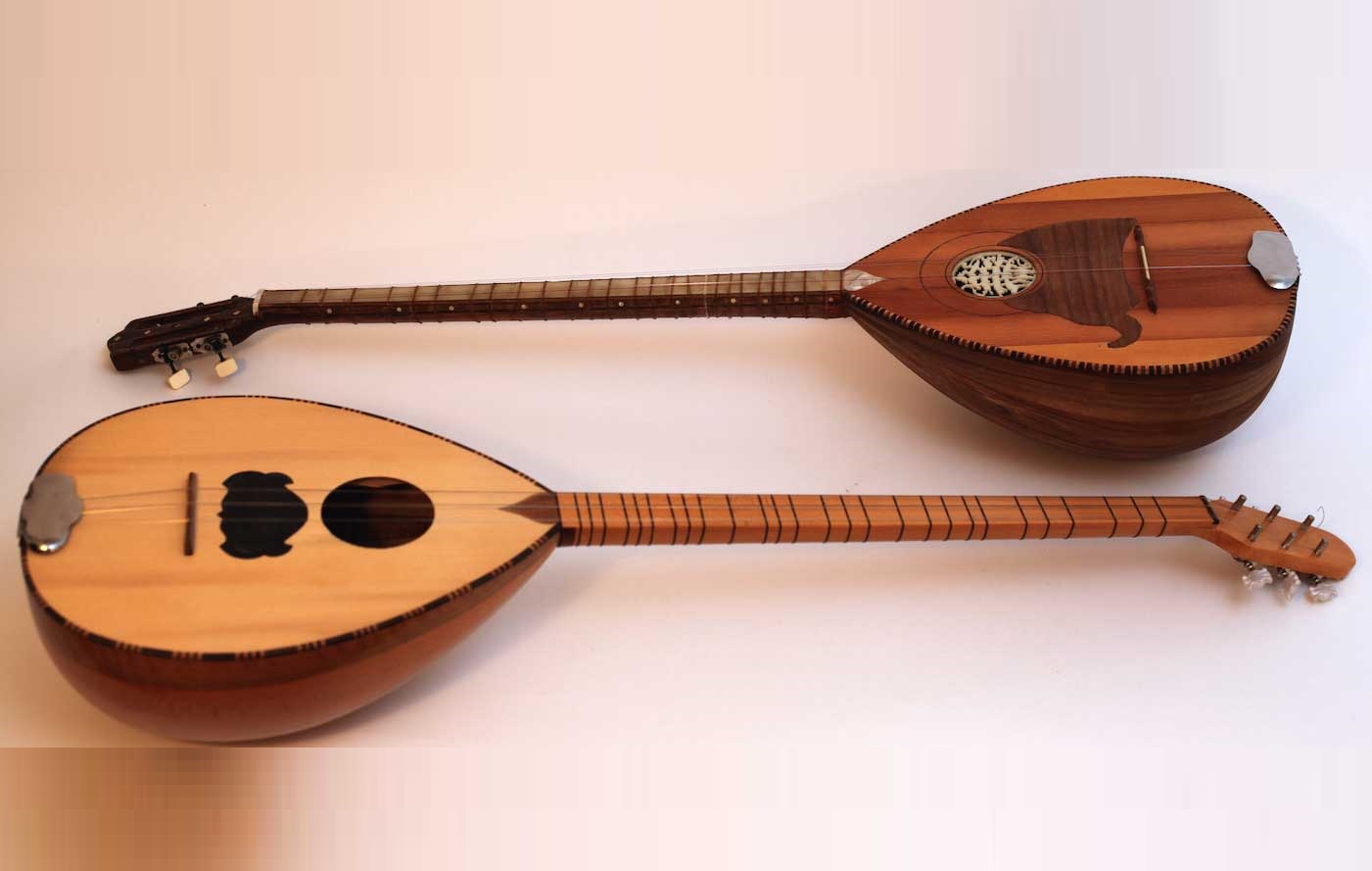Buzuq
Plucked Instruments
Middle East
Between 1001 and 1900 AD
Video
The buzuq is a traditional stringed instrument widely used in Middle Eastern music, particularly in Lebanon and surrounding regions. It is a long-necked, fretted lute with a deep, resonant tone and a metallic timbre. The buzuq is known for its expressive sound, making it a favorite instrument for solo improvisations and melodic accompaniment. It is commonly played with a plectrum and has movable frets, allowing musicians to explore the quarter-tone scales characteristic of Arabic music. The instrument plays an essential role in folk, classical, and contemporary fusion music, bridging the gap between tradition and modernity.
The buzuq is a plucked string instrument belonging to the chordophone family. It is similar to other long-necked lutes like the Turkish saz and the Greek bouzouki, but it has its distinct tuning and sound. Unlike the oud, which is fretless, the buzuq has metal frets that can be adjusted to accommodate different maqam (modal) scales. It is played with a pick, producing a sharp, penetrating sound that stands out in ensemble settings. The instrument is known for its ability to play intricate melodies with great agility, making it a key component in Middle Eastern music.
Origins and History
Evolution of the Buzuq
The buzuq has historical roots in the broader family of Middle Eastern lutes, including the saz, tanbur, and oud. Unlike the oud, which is a short-necked and fretless instrument, the buzuq has a longer neck with movable metal frets, allowing for a wider range of microtonal variations. Historians believe that the buzuq evolved from Persian and Turkish stringed instruments that spread across the Levant region. Over time, it became a staple in Lebanese music, particularly in folk traditions and contemporary compositions.
Role in Lebanese and Arabic Music
Although the buzuq was historically considered a folk instrument, it has gradually gained recognition in classical Arabic ensembles and contemporary fusion music. Unlike the oud, which was traditionally used in court and classical settings, the buzuq was often associated with popular and folk music, particularly among nomadic and rural communities.
Construction and Design
The buzuq is typically crafted from high-quality woods such as walnut, maple, or rosewood, ensuring durability and a rich, warm tone. The body of the instrument is pear-shaped with a flat back, similar to a mandolin or bouzouki. The long neck is fitted with movable metal frets, which allow musicians to adjust tuning according to different maqam scales. The strings are made of metal and are arranged in courses, usually in pairs, tuned to produce a resonant and harmonious sound. The soundboard is often adorned with decorative inlays, reflecting the intricate craftsmanship that goes into making each instrument. Modern versions of the buzuq may include built-in pickups for amplified performances.
Types of Buzuq
While the general design of the buzuq remains consistent, there are variations in size, tuning, and construction. Some common types include:
Traditional Buzuq: The standard version used in folk and classical Arabic music, featuring movable frets and two or three courses of strings.
Extended-Range Buzuq: A larger version with additional strings for expanded melodic possibilities.
Electric Buzuq: A modern adaptation equipped with electronic pickups for amplified performances in contemporary music settings.
Each type serves different musical purposes, catering to various playing styles and genres.
Playing Techniques and Sound Modifications
The buzuq is played with a plectrum, allowing for fast, intricate picking techniques. Common playing styles include:
Tremolo Picking: Rapid alternation of notes to create a sustained, expressive sound.
Ornamentation: Adding grace notes, trills, and slides to enhance melodic lines.
Glissando and Vibrato: Smooth transitions between notes and subtle pitch modulation.
Quarter-Tone Adjustments: Utilizing movable frets to explore microtonal variations in maqam scales.
Amplified versions of the buzuq allow musicians to modify the sound using effects such as reverb, delay, and equalization, making it suitable for fusion and experimental music.
Applications in Music
The buzuq is a versatile instrument used in various musical settings. In traditional Arabic music, it plays a prominent role in folk ensembles and solo performances. It is often featured in Lebanese, Syrian, and Palestinian music, providing both melodic and rhythmic support. In addition to classical and folk traditions, the buzuq has been incorporated into world music, jazz, and contemporary fusion projects. Artists experiment with its sound in cross-genre collaborations, blending Middle Eastern tonalities with Western harmonies.
Cultural Significance
The buzuq holds deep cultural significance in the Middle East, particularly in Lebanese and Syrian music. It has been an essential instrument in folk traditions, used for storytelling, dance, and social gatherings. The instrument is closely associated with Levantine cultural identity and is featured in numerous regional festivals and performances. Throughout history, the buzuq has been a symbol of resilience and artistic expression, preserving musical heritage while adapting to contemporary trends. Today, it continues to be celebrated in both traditional and modern contexts, representing a bridge between the past and the future of Middle Eastern music.
Maintenance and Care
To maintain the buzuq in optimal condition, regular care and maintenance are necessary. Key aspects include:
String Replacement: Changing strings periodically to maintain tonal clarity.
Cleaning: Wiping down the instrument after each use to prevent dust and dirt buildup.
Humidity Control: Storing the buzuq in a stable environment to prevent warping.
Fretboard Maintenance: Adjusting movable frets as needed for accurate tuning.
Tuning Pegs and Bridge Adjustments: Ensuring stability and proper intonation.
For electric versions, maintaining electronic components such as pickups and cables is essential for reliable performance.
Advantages and Disadvantages
The buzuq offers several advantages, including its rich tonal palette, versatility in musical styles, and ability to explore microtonal nuances. It is highly expressive and can adapt to both traditional and modern settings. However, it also presents some challenges, such as:
Complex Tuning System requires an understanding of maqam scales and quarter-tones. Limited Global Recognition is less widely known outside the Middle East compared to instruments like the oud or guitar. The availability of high-quality instruments may be difficult to find outside of the region. Despite these challenges, the buzuq remains a cherished instrument, appreciated for its depth of expression and historical significance. Whether played in folk traditions or innovative musical experiments, it continues to captivate audiences and musicians alike.
FAQ
What is the origin of the Buzuq?
The Buzuq originates from the Levant region, particularly Lebanon and Syria. It is a long-necked lute closely related to the Turkish saz. Traditionally associated with folk and classical Arabic music, the Buzuq is often used in solo performances and small ensembles.
How is the Buzuq played?
The Buzuq is played with a plectrum, producing a sharp and resonant tone. It features movable frets, allowing for quarter-tone tuning essential in Arabic music. Players use fast picking and intricate melodic runs to create expressive musical phrases.
What are the advantages of playing the Buzuq?
The Buzuq provides rich melodic possibilities with its flexible tuning and quarter-tone capabilities. It is a versatile instrument used in both folk and classical music. Its bright and resonant sound makes it ideal for expressive and intricate performances.
 Links
Links
References
Other Instrument
Categories



















